NEW ZEALAND
2 Apr 2024
MARCUS MCSHANE LIGHTING DESIGNER
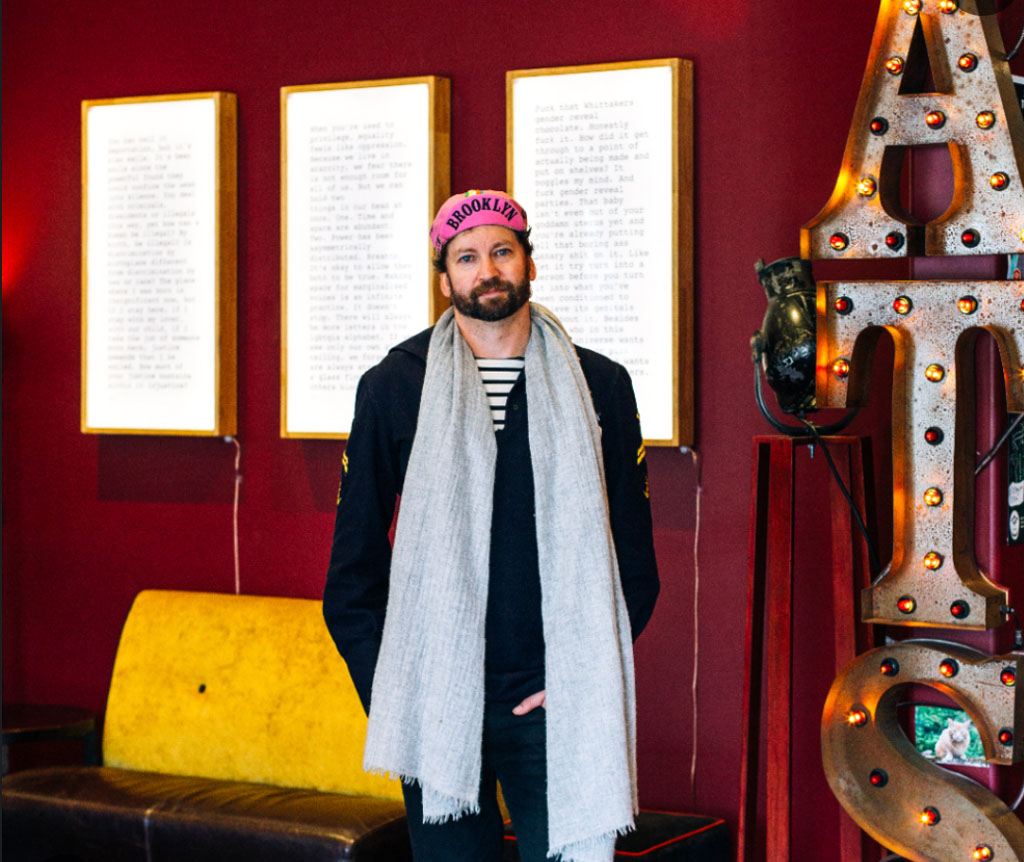
Subscribe to CX E-News
Fusing lighting, art, and eco-consciousness
From lighting tech in the late 90s to cycling around Wellington with a pack of animated wolves and sixty masked and howling fellow bike enthusiasts is some journey. Award winning lighting designer Marcus McShane is hard to label, sometimes lighting designer, always artist, occasional improvisor, and consistently a passionate advocate for environmental efficiency. He talks to us about where he’s been and where to next.
Over the past 12 years, Marcus has tackled over 400 projects, winning 20-plus awards including six Wellington Theatre (formerly Chapman Tripp) Awards for his lighting design, five NZ Fringe awards for his light-based artworks, and two Architecture NZ awards for his work lighting buildings. He is a mainstay of the Wellington Te Whanganui-a-Tara arts scene, with work consistently touring throughout New Zealand and internationally.
Studying writing at university, Marcus worked as a theatre lighting tech, initially to pay the bills but within a matter of years, literature had been sidelined by lighting. For a few years he toured and worked on increasingly larger productions but as the gigs got bigger Marcus’ enjoyment waned, “I love being backstage and being part of a show crew and I still operate my designs now and again because I miss that, but I also got bored of the simplicity and standardisation of the larger shows I was designing. I can understand that the huge investment promotors make requires a product that runs perfectly and isn’t risky but I love solving problems and things felt too standardised, and not wild enough.”
He favours the more eclectic, chaotic, and sometimes never to be repeated shows. He worked on the early stages of Icelandic musician Jonsi’s ‘Go Do’ tour. One test performance was to a small, invited audience whose only price of admission was to dress as animals, “We were in a warehouse in South London full of hundreds of people dressed as birds, mammals, and reptiles, sharing bottles of wine and dancing as they thought the animal they were dressed as would dance. It was so Bohemian and joyous, and set the bar for delight so high that the actual tour seemed a bit deflated by comparison.”
He also relished his work at Wellington institution BATS on numerous shows funded through STAB, a sought-after annual commission that encourages companies to push theatrical boundaries, “I was fortunate to be designing some ridiculous productions, absolutely filled with problems and completely exhausting, but in hindsight, delightful.
For example ‘Everything is Okay’; it was set in a condemned warehouse where we used crushed cars as set objects and had performers dancing on running photo copiers with the lids removed which also lit that scene. All the technical equipment would get covered in pigeon crap between shows, and by pack out we realised we had several tonnes of e-waste we were going to have to deal with.”
Which brings us seamlessly on to one of Marcus’ other driving forces, a quiet but staunch commitment to reducing emissions, “I’m fascinated by how we can creatively use less energy.” At the back of his mind at all times when lighting productions, it is front and central in his artwork. His most exhibited work is performance piece ‘Nag’, where invited artists pedal bikes that power everything required to work in an art studio built entirely of recycled materials. Old washing machine innards are rewired into generators driven by vintage racing bicycles. The installation also involves record players, demolition timber, and some very odd wiring to create an erratic and exhausting workspace, “We took it to the USA for a New Zealand Performance Arts showcase and at one point had New York punk bands pedalling to power recording equipment whilst trying to play their instruments.”
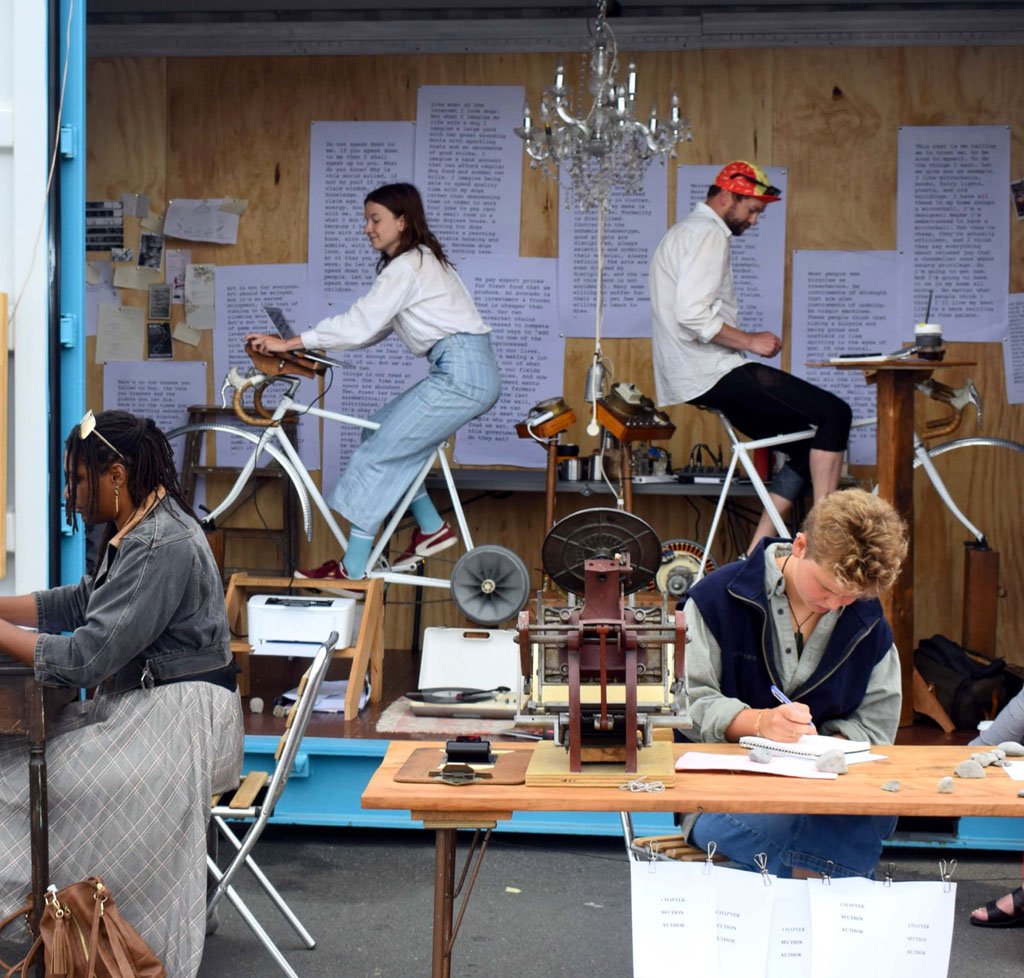
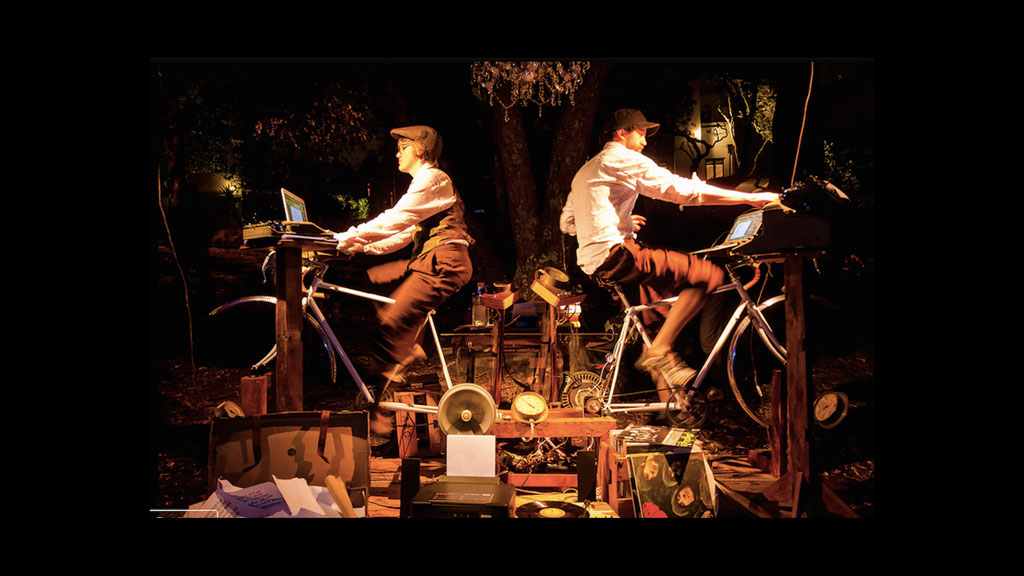
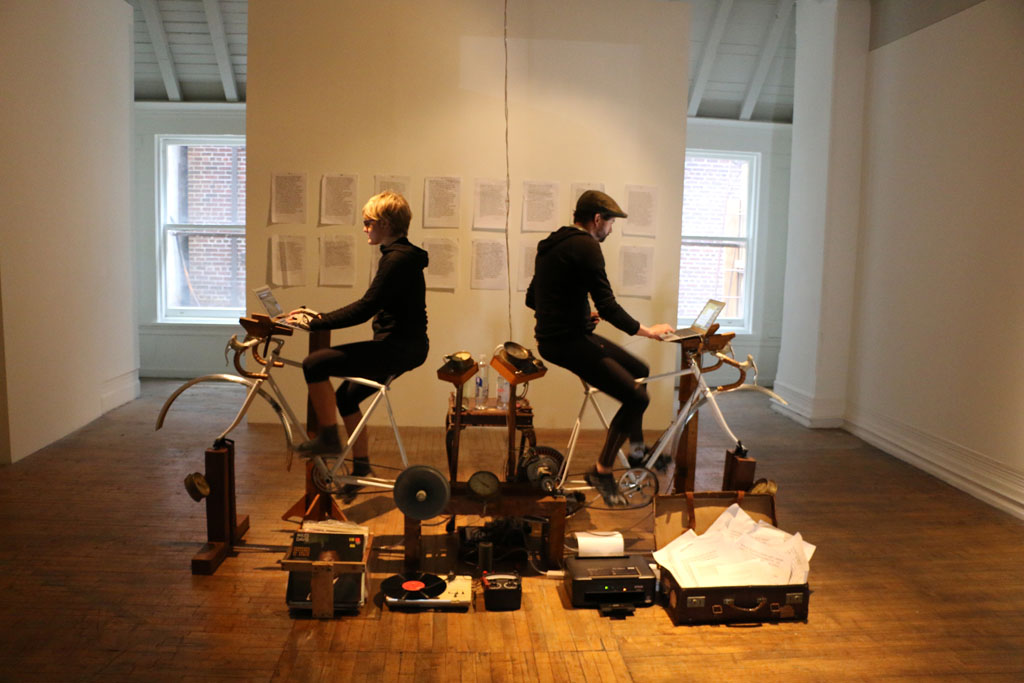
Based on the same concept, ‘The Book Factory’, a human powered publishing house, is currently touring festivals, “It runs best at night for the lighting. The audience assume the role of writer, painter, printer, editor and so on. We use bicycle powered printers to publish a new unique 120 page book every 30 minutes or so, followed by a book launch with fake bubbles and sliced fruit.” The books are then digitised and the originals go to the local library, “After Wanaka’s Festival of Colour the library had a significant uptake in visitors coming to see what they or their children had produced.”
The end of last year saw Marcus take to the streets in ‘Velocine’ where he used his cargo bike as a mobile video projection unit, powering a 10,000 lumen data projector screening animations onto the upper floors of Cuba Street buildings, accompanied by a bespoke sound track as he rode, “Video designer Rebekah de Roo created a series of animated animals designed for different building surfaces and I had a USB keyboard with QLab hot keys set up to allow me to choose an animation that I knew would work as I cycled past. Different buttons would send whales or albatross or schools of fish swimming across buildings.”
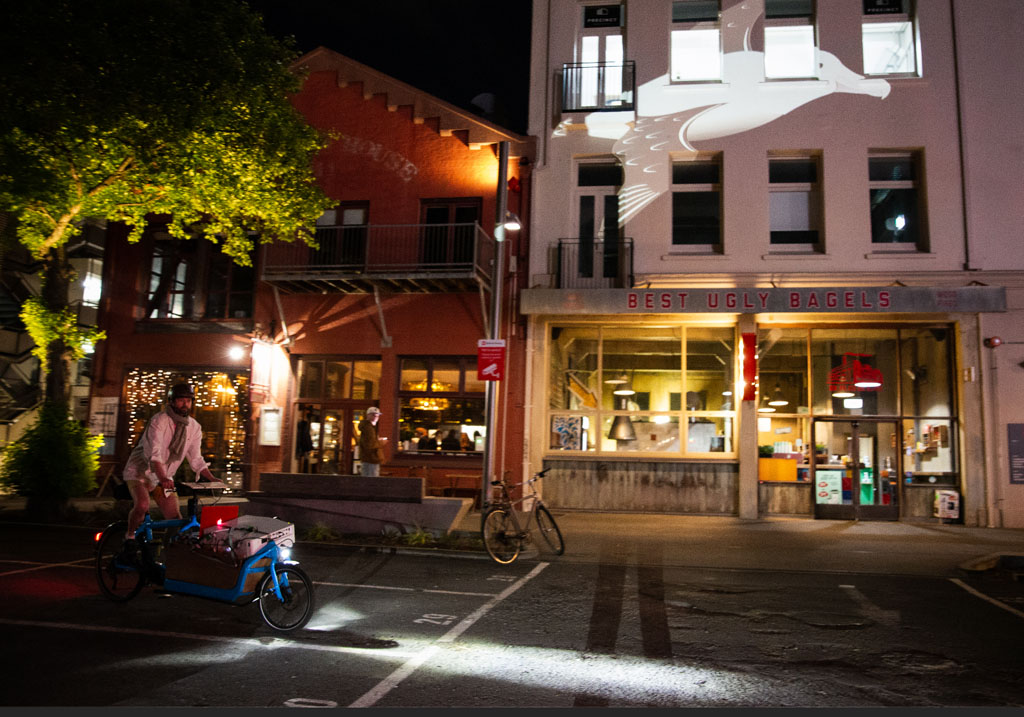
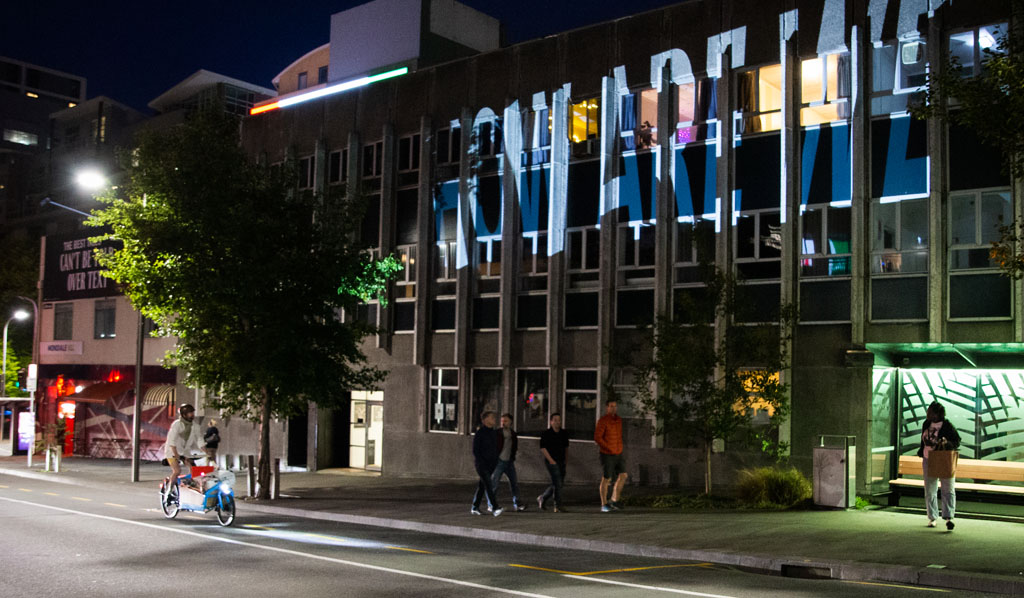
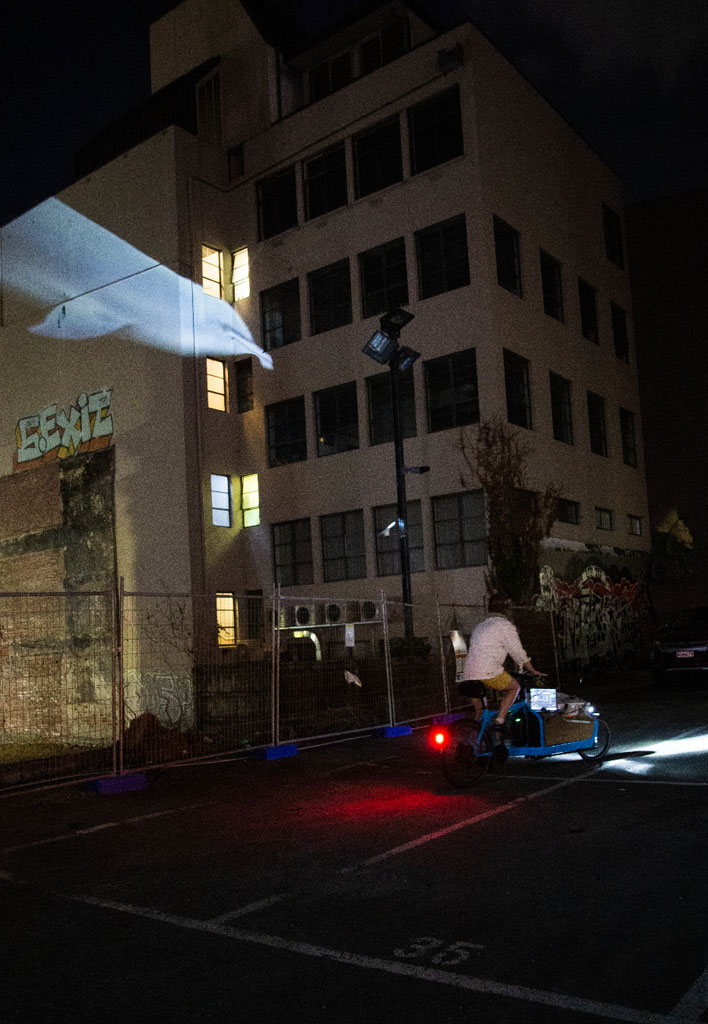
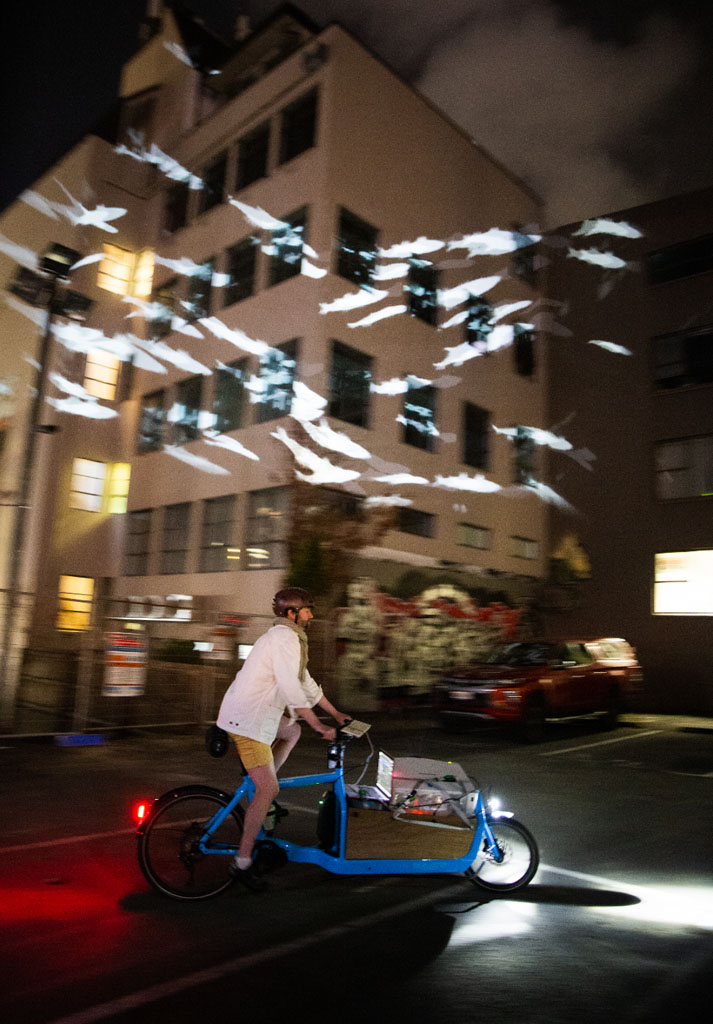
For Wellington’s upcoming Lōemis Festival marking the Winter Solstice, Marcus will be joined by up to 60 other cyclists who will have attended mask making and howling workshops. Together they will all make their way to Oriental Beach, followed by animated wolves, again projected from Marcus’ bike with a new more sinister soundtrack, “It is a very strange, dark and immersive Winter celebration and we will be leading a procession to a ceremony where people can share their hopes and dreams for the next phase of the year.”
His theatre work also sees him drawn to shows that are exploring environmental issues. ‘The Impossible Has Already Happened’, a dance performance by Footnote New Zealand Dance and Mascall Dance, examining our changing relationship with water, is currently touring Canada; “I experimented with freezing water around lightbulbs overnight in moulds to create different shapes. We hang them over the stage and they slowly drip water and small pieces of ice that flow into structures the dancers build during the show.” He learned a lot about average theatre temperature and that ice can melt inside out meaning whole cups of water would suddenly fall on stage, “That gives the choreographers a challenge. I also couldn’t use incandescent glass bulbs as they can break under the pressure of freezing, which would have been a major hazard, so I’m using transparent LEDs but with less ice as the bulbs don’t produce as much heat.”
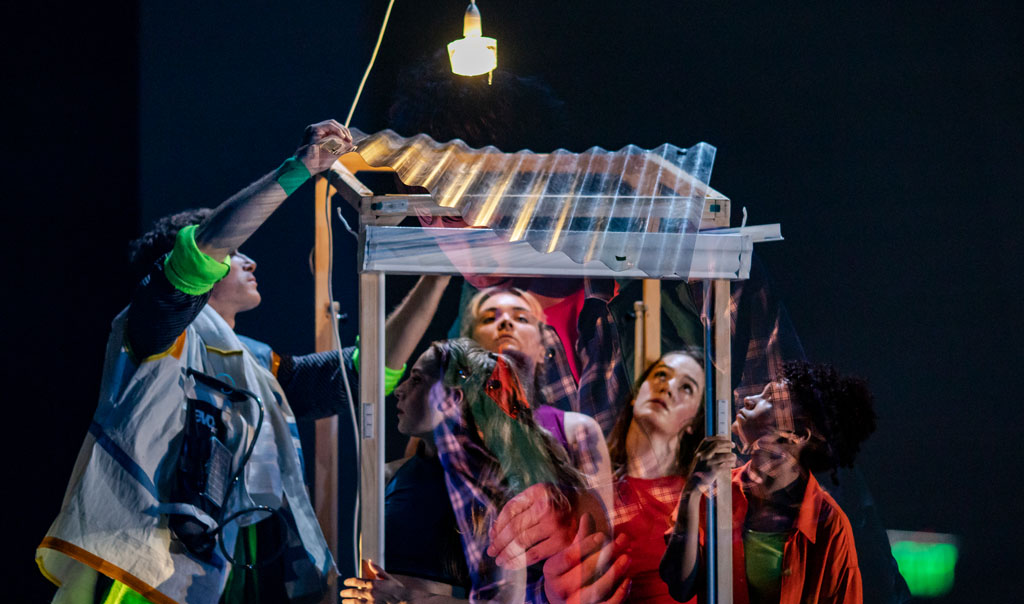
Where next for Marcus? He is planning on mixing it up, “I still enjoy the theatre projects alongside the art and the architectural work. The sense of community in the performing arts is so strong and can I say the people are more interesting?” he chuckles.
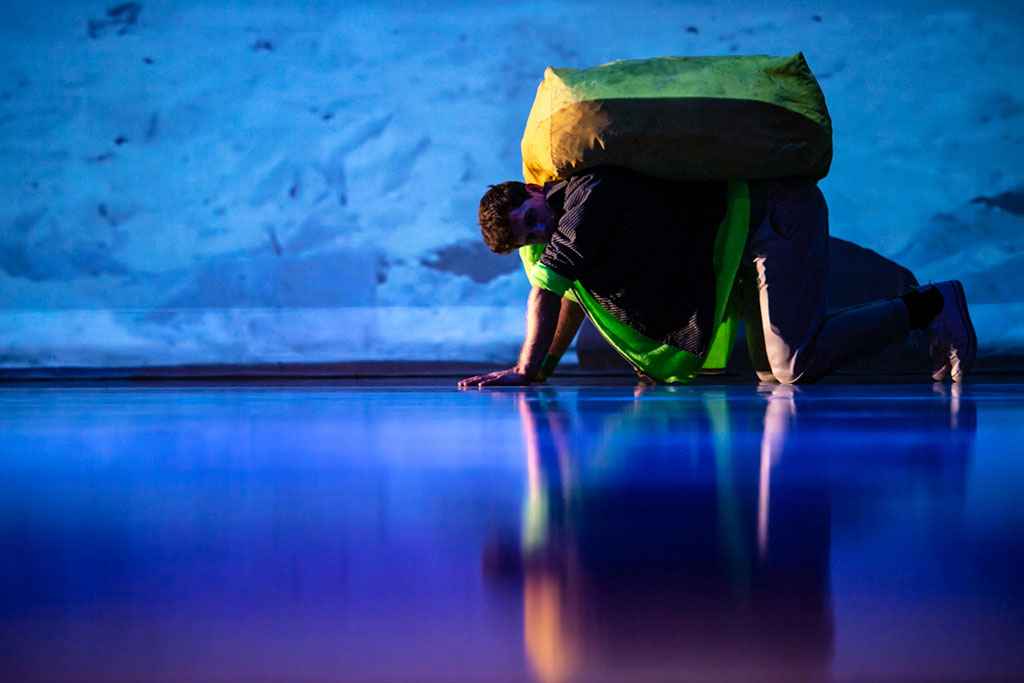
He is also very excited by the increasing intersection of his passions, environmental efficiency and improvisation, “I think over the last ten years the technological developments in lighting have been fascinating. Now we are at a stage where we have affordable programmable waterproof LEDs and hugely improved power supply options. I feel my designs can escape the need for lots of infrastructure, meaning we can take advantage of what non-theatre spaces have to offer and yet still utilise powerful lighting and projection. We can be far more mobile and adventurous.” This could spell the end of his aging Nissan Leaf EV, “It’s got roof racks, it can carry solar panels, it gets far less use than the bicycles, and it could almost trickle charge itself while parked. I’m pretty tempted to start playing with it.”
Subscribe
Published monthly since 1991, our famous AV industry magazine is free for download or pay for print. Subscribers also receive CX News, our free weekly email with the latest industry news and jobs.






